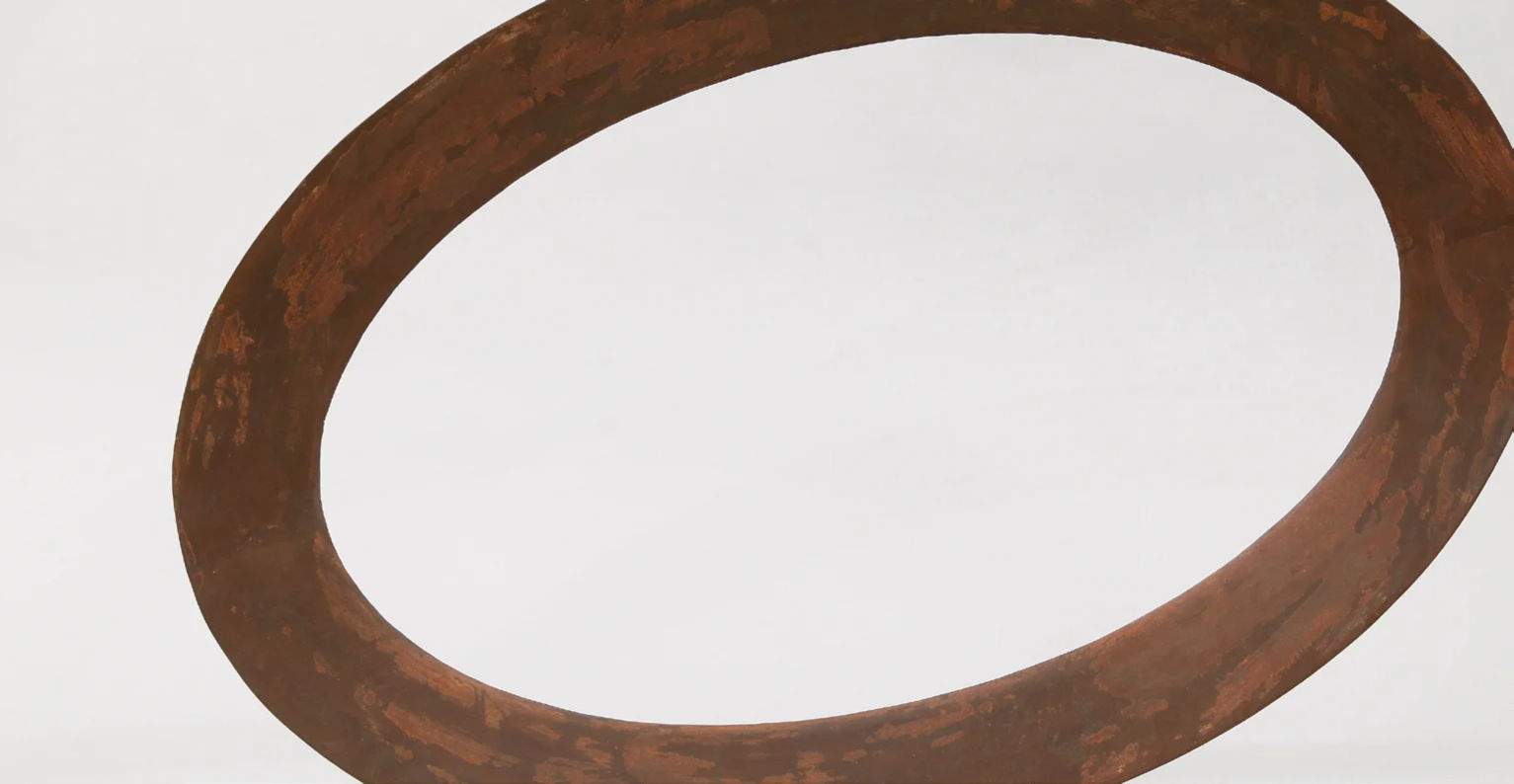Milan, Mauro Staccioli's sculpture-interventions on display at Galleria A arte Invernizzi
Ten years after his last solo exhibition in the same spaces, and five after his death, Milan ’s A arte Invernizzi gallery presents Mauro Staccioli. Sculpture as thought that transforms, a solo exhibition tribute to Mauro Staccioli (Volterra, 1937 - Milan, 2018), one of the most important Italian sculptors of the 20th century.
Since the early 1970s, the artist has created hundreds of what he called his"intervention sculptures" around the world (in temporary or permanent form): large-scale installations on an environmental scale, whose genesis is directly linked to the place of creation, and in turn modifies its physical and ideal coordinates, making the work not a self-referential form, but an active presence in dialogue with the context. Signs through the decades and changes in the world, place after place, year after year, in a mapping that goes from Volterra to Milan, from the Venice Biennale to Documenta in Kassel, from Munich to Brussels, from San Diego to Seoul, from Tel Hai to Quito.
The exhibition presents a number of sculptures in various materials characteristic of his sculptural language (such as concrete, iron, corten steel) and a selection of works on paper that delineate his coordinates of relationship with places. Constant in fact is Staccioli’s attention, from the ideational phase, to the design phase, and then in the realization phase, to a meaningful confrontation with place, space and the pre-existing forms and identities that inhabit it: a distinctive and original component of his “intervention sculptures,” which grafted with their dialoguing autonomy and otherness, contribute in each circumstance to writing a new history of the places in which they are located.
The exhibition itinerary begins with a 1976 work in concrete and iron that one encounters upon entering: a work emblematic of the first phase of his activity, in which the iron point protruding from the concrete has the dual valence of attraction and repulsion: these are years in which Staccioli is among the pioneers of a sculpture that leaves the usual spaces of the museum and gallery to become part of the urban fabric, of the territory, acting with its presence in a place, both physical and social. On the upper floor are three series of corten steel works: plastic forms that recall famous works created in public spaces and in relation to context, such as the “intervention sculpture” conceived for the inauguration of the Luigi Pecci Center for Contemporary Art and the one for the Seoul Olympic Village, consisting of an inverted arch, the half-moon work conceived for the Fridericianum in Kassel in 1988 and now reconfigured to the author’s design in the Intesa Sanpaolo - Gallerie d’Italia collections in Milan, and finally the ellipse that recalls the intervention Primi passi made in Volterra in 2009.
The last room on the upper floor, on the other hand, displays the corten projects for the cycle "Forme perdute," circular-based forms made on a large scale for his solo exhibition held in 2012 in the spaces of the A arte Invernizzi gallery and now permanently exhibited at the Museo d’Arte Contemporanea all’Aperto di Morterone, where Tondi, another of his “intervention sculptures” to which some of the drawings on display are linked, can also be visited. On the lower floor are six sculptures belonging to the"Sbarra e cemento" cycle designed in the 1970s, which create an unexpected dialogue with the columns of the exhibition space. These works belong to the germinal period of his artistic making and are characterized by the same intrinsic energy, which can be perceived in all Staccioli’s works on an environmental scale, that allows them to relate to the surrounding space. With their material physicality they fit into the environment giving it a new perspective, and inviting the viewer to cross it in a renewed and conscious way.
On the occasion of the exhibition, a bilingual monograph will be published with an essay by Francesca Pola and accompanied by iconographic and bibliographic material that traces the work Staccioli has produced over the twenty-five years of his collaboration with A arte Invernizzi, both at the gallery and in public and private spaces.
 |
| Milan, Mauro Staccioli's sculpture-interventions on display at Galleria A arte Invernizzi |
Warning: the translation into English of the original Italian article was created using automatic tools. We undertake to review all articles, but we do not guarantee the total absence of inaccuracies in the translation due to the program. You can find the original by clicking on the ITA button. If you find any mistake,please contact us.




























